Francisco Mieses. Lt, Mil Prov Urbanas inf de Huánuco, 1796. Leg 7286:V:10.
Andrés Millan. SubLt, Mil Prov Discip Inf de Lambayeque, 1797. Leg 7287:XXII:19.
Andrés Minaya. Portaguión, Mil Prov Dragones de las Fronteras de Tarma, 1800. Leg 7288:XXIX:28.
José Miques. Sgt, 1st, Veterano, Mil Discip de Dragones de Lima, 1800. Leg 7288:XXIV:71.
Juan José Mirabal. Lt, Mil Prov Urbanas de Cab de Huamalies, 1800. Leg 7288:XVII:16.
Juan Justo Mirabal. Sgt, Mil Discip de Inf de Cuzco, 1800. Leg 7286:XXIV:35.
Manuel Miramon. SubLt, Inf Real de Lima, 1788. Leg 7283:II:83.
Alberto Miranda. Alf, Mil Discip de Cab Prov de Cañete, 1797. Leg 7287:VI:23.
Francisco Miranda. Lt, Mil Urbanas de Inf de Huancavelica, 1800. Leg 7288:XVI:12.
Francisco Miranda. SubLt, Mil Prov Discip de Inf de Castro, Chiloe, 1800. Leg 7288:IX:68.
Gregorio Miranda. Portaestandarte, Mil Discip de Bab de Arnero de Chancay, 1796. Leg 7286:III:5.
José Jenaro Miranda. Sgt, 1st, Veterano, Mil Discip de Dragones de Lima, 1800. Leg 7288:XXIV:73.
José Lino Miranda. Sgt, Mil Prov Discip Inf de San Miguel de Piura, 1800. Leg 7286:XXV:28.
Juan de Miranda. Capt, Mil Prov Urbanas de Dragones de Quispicanchi, Cuzco, 1798. Leg 7286:XX:7.
Lorenzo Miranda. Capt, Mil Urbanas Inf de Huananga, 1800. Leg 7288:XV:6.
Mariano Miranda. Lt, Mil Prov Discip de Inf de Castro, Chiloe, 1800. Leg 7288:IX:47.
Miguel Miranda. Sgt, Mil Prov Discip de Inf de Castro, Chiloe, 1800. Leg 7288:IX:96.
Nicolás Miranda. Sgt, Mil Discip de Inf de Castro, Chiloe, 1800. Leg 7288:IX:89.
Pablo Miranda. SubLt, Mil de Pardos Libres de Lima, 1796. Leg 7286:XII:39.
Patricio Miranda. Alf, Mil Discip Cab de Trujullo, 1800. Leg 7288:XXXI:16.
Rafael Miranda. Sgt, Mil Prov Inf de Castro, Chiloe, 1800. Leg 7288:IX:95.
Tomás Miranda. Sgt, 1st de Fusileros, Mil Prov Urbanas de Inf de Cajamarca, 1797. Leg 7287:IV:33.
Miguel Mireles. Alf, Mil Prov Discip de Dragones de Arica, 1800. Leg 7288:II:45.
Pedro Mogo. Sgt, Mil Prov Urbanas Cab de Huamalies, 1800. Leg 7288:XVII:24.
Melchor Domingo de Mogollon. Sgt, Inf del Real Asiento de Paucartambo, 1798. Leg 7286:XIX:38.
José Mohedas. Sgt, Inf Real de Lima, 1788. Leg 7283:II:115.
Antonio Molina. Sgt, Mil Urbanas Inf de Huanta, 1800. Leg 7288:XVIII:66.
Cayetano. SubLt de bandera, Mil Prov Urbanas de Inf de Urubamba, 1797. Leg 7287:XXXVIII:29.
José Molina. Sgt, Mil Prov Discip Inf de San Miguel de Piura, 1800. Leg 7286:XXV:34.
José Antonio Molina. Col, grad of Army, Inf Real de Lima, 1796. Leg 7287:XXIV:76.
Pedro Molina. Cadet, Inf Real de Lima, 1800. Leg 7288:XXII:139.
Marcos Molleda. Mariscal/Marshal Mayor, Mil Prov Discip de Cab de Cuzco, 1792. Leg 7284:XVII:4.
Nicolás Mollinedo. Capt, Mil Urbanas de Inf de Abancay, 1793. Leg 7284:11:10.
Carlos Moncayo. Lt, Inf Real de Lima. 1800. Leg 7288:XXII:34.
Manuel Antonio Mondoñedo. SubLt, Mil Prov Urbanas Inf de Cajamarca, 1797. Leg 7287:IV:22.
Manuel Mondragon. Sgt, Mil Urbanas Cab San Pablo de Chalaquez, 1797. Leg 7287:XI:47.
Joaquin Montros. Lt, Mil Discip Cab de Trujillo, Perú, 1800. Leg 7288:XXXI:10.
Anselmo Montalban. Sgt, Mil de Pardos Libres de Lima, 1796. Leg 7286:XII:50.
Pedro Montalban. Capt, Mil Urbanas de Dragones de Palma, Partido de Jauja, 1800. Leg 7288:XXI:8.
Eusebio Montalvo. SubLt, Mil Prov Urbanas de Inf de Calca, 1797. Leg 7287:V:14.
Francisco Montalvo. Capt, Mil Urbanas Inf de Moquegua, 1797. Leg 7287:XXVI:5.
José Estaquio Montalvo. Cadet, Mil Urbanas Inf de Moquegua, 1797. Leg 7287:XXVI:46.
José Remigio Montalvo. Cadet, Mil Urbanas Inf de Moquegua, 1797. Leg 7287:XXVI:47.
Matías Montalvo. Lt de Granaderos, Mil Prov Urbanas de Inf de Calca, 1797. Leg 7287:V:10.
Matías Montalvo. Sgt, Mil Prov Urbanas Dragones de Huambos, Partido de Cajamarca, 1797. Leg 7287:XVII:29.
Ramón Montalvo. Ayudante Mayor Mil Prov Urbanas de Inf de Calca, 1797. Leg 7287:V:11.
Pedro Montanchez. Alf, Mil Discip Cab de Camaná, 1796. Leg 7286;XIV:18.
Antonio María del Monte. Ayudante mayor Mil Urbanas de Inf de Huancavelica, 1800. Leg 7288:XVI:7.
Manuel Montellano Basualdo. Alf de la 1st Comp, Mil Urbanas Cab de Moquegua, 1792. Leg 7284:XXII:10.
Conde de Montemar. Col, Mil Prov Discip de Cab del Valle de Chincha, 1797. Leg 7287:XII:1.
Francisco Montenegro. SubLt, Inf Real de Lima, 1790. Leg 7283:VIII:66.
Manuel Montenegro. Sgt, Mil Prov Urbanas Dragones de Huambos, Provincia de Cajamarca, 1797. Leg 7287:XVII:34.
Nicolás Montenegro. Cadet, Mil Urbanas Inf de Moquegua, 1797. Leg 7287:XXVI:42.
Manuel Montenegro y Quesada. Capt, Mil Urbanas Inf de Moquegua, 1797. Leg 7287:XXVI:7.
Antonio Montero. Capt, Inf Real de Lima, 1800. Leg 7288:XXII:22.
Francisco Montero. Lt, Mil Prov Discip de Pardos de l 8th Comp, San Miguel de Piura, 1797. Leg 7287:XXXIII:2.
Francisco Montero. Lt, Inf Real de Lima, 1800. Leg 7288:XXII:45.
José Montero. Alf, Mil Prov Urbanas Cab de Huanta, 1798. Leg 7286:XVII:21.
Manuel Montero. Capt, Mil Discip Inf pardos de la 8th Comp de San Miguel de Piura, 1797. Leg 7287:XXXIII:1.
Pedro Monterola. Cadet, Inf, Real de Lima, 1788. Leg 7283:II:130.
Andrés Lino Montes. Capt, Mil Cab del partido de Santa, 1792. Leg 7284:XXIII:7.
Pedro Lino Montes. Lt, Mil Cab del partido de Santa, 1799. Leg 7286:XXIII:9.
Luis Montoya. Lt, Mil Urbanas Dragones de Palma, Partido de Jauja, 1800. Leg 7288:XXI:12.
Manuel Montoya. Capt, Comp Veteranas de la dotacián de Chiloe, 1800. Leg 7288:XI:2.
Manuel Ignacio Montoya. Alf, Mil Prov Discip Dragones de Caraveli, 1796. Leg 7287:VIII:33.
Rudesindo Montoya. Sgt, Mil Prov Discip Dragones de Caraveli, 1796. Leg 7287:VIII:33.
Juan Antonio Montujar. Sgt Major, Mil Prov Discip Cab de Arequipa, 1797. Leg 7287:II:7.
José María Monzon. Cadet, Mil Discip Inf Española de Lima, 1800. Leg 7288:XXIII:62.
Pascual Antonio Monzon. Lt, Mil Discip Inf Española de Lima, 1800. Leg 7288:XXIII:38.
José Monzon de Aguirre. Sgt, Mil Española Cab de Luya y Chillaos, Priv Chachapoyas, 1792. Leg 7284:XX:18.
Andrés Mora. Capt, Mil Discip Pardos Libres de Lima, 1796. Leg 7286:XII:23.
Juan José Mora. Lt, Mil Discip Cab Arnero de Chancay, 1800. Leg 7288:III:14.
Pedro Mora. Alf, Mil Prov Discip Cab del Valle de Chincha, 1797. Leg 7287:XII:24.
Francisco del Moral. Lt, Inf Real de Lima, 1800. Leg 7288:XXII:28.
Alonso Morales. Alf, Mil Discip Cab Arnero de Chancay, 1800. Leg 7288:III:19.
Camilo Morales. Lt, Inf Real de Lima, 1800. Leg 7288:XXII:44.
Carlos Morales. SubLt, Mil Prov Urbanas Inf de Huanta, 1800. Leg 7288:XVIII:46.
Eduardo Morales. Sgt, Mil Prov Discip Inf San Miguel de Piura, 1800. Leg 7286:XXV:32.
Fernando Morales. Sgt, Mil Discip Inf Española de Lima, 1800. Leg 7288:XVIII:57.
José Ildefonso Morales. Capt, Mil Discip Dragones de la ciudad de Piura y Puerto Tumbez, 1795. Leg 7285:XXIII:9.
Mariano Morales. SubLt, Mil Prov Urbanas inf de Huánuco, 1796. Leg 7286:V:25.
Pedro Morales. SubLt, Mil Prov Urbanas Inf de Abancay, 1793. Leg 7284:II:59.
Pedro Morales. Sgt, Mil Prov Urbanas Cab de Huánuco, 1797. Leg 7286:VI:26.
Ventura Morales. SubLt, Mil Prov Urbanas Inf de Abancay, 1793. Leg 7284:II:64.
Victorio Morales. Sgt, Mil Prov Urbanas Cab de Huánuco, 1797. Leg 7286:VI:30.
Brigido Moran. SubLt, Mil Discip Pardos y Morenos de Inf Lambayeque, 1797. Leg 7287:XXIII:15.
Tiburcio Morante. Sgt, Mil Prov Urbanas Dragones de Huambos, Partido de Cajamarca, 1797. Leg 7287:XVII:33.
Andrés Moreno. Lt, Mil Discip Cab de Ica, 1797. Leg 7287:XX:17.
Antonio Moreno. Sgt de Granaderos, Inf Real de Lima, 1800. Leg 7288:XXII:89.
Diego Moreno. Lt de Fusileros, Comp sueltas de Inf Españolas Mil Discip de Inmemorial del Rey, Lima, 1794. Leg 7285:IV:4.
José Moreno. Sgt, Inf Real de Lima, 1800. Leg 7288:XXII:58.
José Moreno. Lt, Bn Prov de Mil de Pardos Libres de Lima, 1800. Leg 7288:XXV:6.
Juan Manuel Moreno. Cadet, 1st Ckomp, Mil Urbanas de Inf de Huancavelica, 1797. Leg 7287:XVIII:27.
Marcos Moreno. Sgt, Mil de Pardos Libres de Lima, 1796. Leg 7286:XII:48.
Mariano Moreno. Sgt, Mil Prov Urbanas Cab de Huamalies, 1800. Leg 7288:XVII:19.
Tomás Moreno Chocano. Capt, Mil Discip Dragones de Arica, 1800. Leg 7288:II:5.
José Antonio Mori. SubLt, Mil Inf Española de San Juan de la Frontera de Chachapoyas, 1792. Leg 7284:VI:28.
Juan Mori. Sgt, Mil Prov Urbanas de Inf de San Antonio de Cajamarca, 1797. Leg 7287:III:31.
Pedro Morillas. Sgt, Mil Discip de Cab de Trujillo, Perú, 1800. Leg 7288:XXXI:21.
Antonio Morillo. SubLt, Mil Prov Urbanas Inf de Abancay, 1793. Leg 7284:II:24.
Brigido Morillos. Sgt, Mil Discip Cab de Ferreñafe, 1797. Leg 7287:XIV:46.
Manuel Moron Ortiz de Uriarte. Capt, Mil Prov Discip Dragones del Valle de Majes, 1797. Leg 7287:XXV:6.
Pedro Moron Ortiz de Uriarte. Lt, Mil Prov Discip Dragones del Valle de Majes, 1797. Leg 7287:XXV:16.
José Manuel Moscoso. SubLt, Mil Urbanas Inf de Andahuylas, 1799. Leg 7286:XXII:16.
Felipe Moscoso y Lobaton. Capt, Mil Discip de Inf de Cuzco, 1800. Leg 7286:XXIV:5.
Manuel Mostacero. Sgt, Mil Urbanas Cab San Pablo Chalaquez, 1798. Leg 7287:XI:44.
Pedro Mostajo. Sgt, Mil Prov Discip Inf de Arequipa, 1800. Leg 7288:I:70.
Antonio Motino. Sgt, 1st, grad SubLt, Inf Real de Lima, 1800. Leg 7288:XXII:99.
Vicente Moya. Capt, Mil, Urbanas Inf de Huamanga, 1800. Leg 7288:XV:8.
Gabriel Muchotrigo. Sgt, 1st, Veterano, Mil Discip de Dragones de Lima, 1800> Leg 7288:XXIV:63.
Manuel Muga. SubLt, Mil Prov Discip inf de Lambayeque, 1797. Leg 7287:XXII:22.
Manuel Munarriz. Sgt, Mil Prov Urbanas Dragones de Carabayllo, 1800. Leg 7288:IV:27.
Tadeo Mungia. Capt, Mil prov Urbanas de Cab de Huanta, 1798. Leg &286:XVII:6.
Antonio de los Muñecas. Capt, Mil Discip Cab de Ferreñafe, 1797. Leg 7287:XIV:14.
José Joaquin Muñecas. Portaestandarte, Mil Discip Cab de Ferreñafe, 1797. Leg 7287:XIV:5.
Gregorio Muñoa. Lt de Granaderos, Mil Prov Discip de Inf de San Miguel de Piura, 1800. Leg 7286:XXV:16.
Domingo Muñoz. Capt, Mil Prov Discip Inf de Castro Chilioe, 1800. Leg 7288:IX:16.
Félix Muñoz. Sgt, Mil Cab del partido de Santa, 1799. Leg 7286:XXIII:19.
Fernando Muñoz. Sgt, Mil Urbanas Inf de Moquegua, 1797. Leg 7287:XXVI:35.
José Mariano Muñoz. Capt, Mil Discip Cab Arnero de Chancay, 1800. Leg 7288:III:7.
Juan Pablo Muñoz. Capt de Granaderos, Mil Prov Discip Dragones de Caraveli, 1796. Leg 7287:VIII:3.
Nicolás Muñoz. Sgt, Mil Prov Discip Inf de Castro, Chiloe, 1800. Leg 7288:IX:85.
Tomás Muñoz. Col, Mil Discip Cab Arnero de Chancay, 1800. Leg 7288:III:5.
José Muñoz Garcia. Lt, Mil Prov Discip Inf de Arequipa, 1800. Leg 7288:I:27.
Mariano Muñoz Larrea. SubLt Mil Prov Discip inf de Arequipa, 1792. Leg 7284:III:55.
José Muñoz Romero. Lt, Mil Prov Discip Inf de Arequipa, 1800. Leg 7288:I:34.
Pedro Muñoz Valera. Lt, Mil Discip Inf Española de Lima, 1800. Leg 7288:XXIII:37.
Luis Murgao. Sgt, Mil Prov Urbanas Inf de Huánuco, 1796. Leg 7286:V:31.
Lorenzo Murguia. Lt, Mil Prov Discip Cab de Arequipa, 1797. Leg 7287:II:31.
Baltasar Moro/Muro. Ayudante Mayor, Mil Discip Cab de Ferreñafe, 1797. Leg 7287:XIV:4.
José Manuel Muro. Alf, Mil Discip Cab de Ferreñafe, 1797. Leg 7287:XIV:32.
José Murrieta. Ayudante Mayor, Mil Discip Dragones de Arica, 1800. Leg 7288:II:15.
Francisco Nandin. Alf, Mil Discip Cab de Ica, 1800. Leg 7288:XX:23.
Manuel Narezo. Alf, Mil Prov Discip Cab de Cuzco, 1797. Leg 7287:X:22.
Manuel Narvaez. Sgt, Mil Prov Urbanas Inf de Huanta, 1800. Leg 7288:XVIII:67.
Adriano Narvarte. Alf, Mil Urbanas Dragones de Palme, Partido de Jauja, 1796. Leg 7286:XIII:23.
Francisco Narvarte. Alf, Mil Urbanas Dragones de Palma, Partido de Jauja, 1800. Leg 7288:XXI:22.
Manuel Navamuel. LSgt, Mil Prov Urbanas Ldragones de Carabayllo, 1800. Leg 7288:IV:24.
José Navarette. Alf, Mil Prov Urbanas Cab de Huánuco, 1797. Leg 7286:VI:21.
Juan Miguel Navarette. Lt, Mil Prov Urbanas Inf de Cajamarca, 1797. Leg 7287:IV:11.
Pedro Navarette. Sgt de Carabineros, Mil Discip Cab de Camaná, 1798. Leg 7286:XIV:31.
Alejo Navarro. Lt, Mil Prov Discip Cab de Arequipa, 1797. Leg 7287:II:22.
Andrés Navarro. Lt, Veterano grad Capt, Mil Discip Dragones de Lima, 1800. Leg 7288:XXIV:29.
Francisco Manuel Navarro. SubLt, Mil Urbanas Inf de Moquegua, 1797. Leg 7287:XXVI:25.
Luis Navarro. Alf, Mil Discip Dragones de Acari y Chala, 1796. Leg 7286:I:22.
Manuel Navarro. Capt, Mil Prov Urbanas Inf de Abancay, 1793. Leg 7284:II:47.
Pablo Navarro. Lt, Mil Discip de Dragones de Acari y Chala, 1796. Leg 7286:I:13.
Pedro Navarro. Alf, Mil Discip Dragones de Amotape, Piura, 1795. Leg 7285:XXIII:15.
Tomás Navarro. Alf, Portaguión, Mil Discip Dragones de Arica y Chala, 1796. Leg 7286:I:21.
Francisco Manuel Navarro y Casanova. Cadet, Mil Urbanas de Inf de Moquegua, 1792. Leg 7284:XXIV:35.
Juan Navarro Gonzalez. Alf, Mil Dscip, Dragones de Acari y Chala, 1796. Leg 7286:I:20.
Francisco Navarro y la Helguera. Col, Mil Discip, Dragones de Arica, 1800. Leg 7288:II:1.
Tomás Navarro y la Helguera. Capt de Grenaderos, Mil Discip Dragones de Arica, 1800. Leg 7288:II:6.
Juan Navarro Rospillosi. Lt, Mil Discip Dragones de Acari y Chala, 1796. Leg 7286:I:9.
Manuel Negrillo. Alf, Mil Prov Discip de Dragones de Caraveli. 1798. Leg 7287:VIII:31.
Sebastián Negrillo. Alf, Mil Prov Discip Dragones de Caraveli, 1796. Leg 7287:VIII:23.
José Negron. Ayudante Mayor, Mil Prov Cab de Huianta, 1798. Leg 7286:XVII:8.
Esteban Neira. Lt, Mil Prov Discip Dragones de Caracas, 1797. Leg 7287:VIII:19.
Felipe Neira. Alf, Mil Discip Dragones de Caraveli, 1796. Leg 7287:VIII:28.
José de Neira. Lt, Mil Discip de Dragones de Caracas, 1796. Leg 7287:VIII:17.
José de Neira. Ayddante Mayor, Mil Discip de Dragones de Acari y Chala, 1796. Leg 7286:I:8.
José Antonio de Neira. Lt, Mil Discip Dragones de Acari y Chala, 1796. Leg 7286:I:16.
Patricio Neira. Sgt, Mil Prov Discip de Dragones de Caraveli, 1796. Leg 7287:VIII:39.
Juan de Neira y Carvajal. Ca;t, Mil Discip de Dragones de Acari y Chala, 1796. Leg 7286:I:6.
Pedro Nestares y Palazuelos. Capt, Mil Discip de Cab de Ica, 1800. Leg 7288:XX:7.
Juan Antonio Nevao. Capt, Mil Discip Cab de Ferreñafe, 1797. Leg 7287:XIV:16.
José María Nieto. Lt, Mil Urbanas Inf de Moquegua, 1797. Leg 7287:XXVI:16.
José Nieto y Andrade. Capt, Mil Discip Cab de Arequipa, 1792. Leg 7284:XIII:13.
Antonio Nieto y Roa, Conde de Alastaya. Col, Mil Urbanas, Inf de Moquegua, 1797. Leg 7287:XXVI:1.
Blas Nieves. Lt, Bn Prov de Mil de Pardos Libres de Lima, 1796. Leg 7286:XII:61.
Manuel de las Nieves Rojas. Lt, Mil Inf Española de San Juan de la Frontera de Chachapoyas, 1792. Leg 7284:VI:18.
Manuel Niño de Guzman. Ayudante Mayor, Mil Prov Urbanas Dragones de Quispicanchi, Cuzco, 1798. Leg 7286:XX:14.
Manuel Nocheto. Sgt, Mil Prov Urbanas Dragones de Carabayllo, 1797. Leg 7287:VII:34.
Tomás Noe. Porta-estandarte, Mil Discip Dragones del pueblo de Amotape, Piura, 1795. Leg 7285:XXIII:6.
Eugenio Noriega. Sgt, Mil Urbanas Cab de los territorios de Huancabamba y Chalaco, Piura, 1800. Leg 7286:XXVI:7.
José Noriega. Capt, grad Lt Col, inf Real de Lima, 1800. Leg 7288:XXII:13.
José Vicente de Noriega. Lt, Mil Prov Discip Cab de Arequipa, 1797. Leg 7287:II:19.
Pedro Noriega. SubLt, Inf Real de Lima, 1800. Leg 7288:XXII:70.
Pedro Noriega. Sgt, Mil Pardos Libres de Lima, 1800. Leg 7288:XXV:12.
Cleto Noriega de Piñera. Capt, Mil Prov Discip Cab de Arequipa, 1797. Leg 7287:II:10.
Francisco Novoa. Lt, Mil Prov Urbanas Inf San Antonio de Cajamarca, 1797. Leg 7287:III:12.
Bernardino Nuñez. Sgt, Mil Prov Urbanas Dragones de Carabayllo, 1800. Leg 7288:IV:35.
Francisco Javier Nuñez. Sgt, Mil Prov Discip Dragones del Valle de Majes, 1797. Leg 7287:XXV:38.
Jacinto Nuñez. Sgt, Inf Real de Lima, 1794. Leg 7285:IX:96.
José Nuñez. Lt, Comp Sueltas Inf del partido de Carelmapu, 1800. Leg 7288:XIII:5.
Juan Manuel Nuñez. Lt, Mil Urbanas Inf de Huancavelica, 1797. Leg 7287:XVIII:13.
Manuel Nuñez. Lt, Mil Urbanas Inf de Huancavelica, 1800. Leg 7288:XVI:13.
Pedro Nuñez. Cadet, Inf, Real de Lima, 1800. Leg 7288:XXII:128.
Francisco Nuñez Gago. Lt, Mil Discip Inf Española de Lima, 1800. Leg 7288:XXIII:34.
José Antonio Nuñez Garcico. Lt, Mil Discip Inf Española de Lima, 1788. Leg 7283:I:19.
Justo Lorenzo Nuñez y Pacheco. Alf, Mil Prov Discip Dragones del Valle de Majes, 1797. Leg 7287:XXV:21.
José Nuñez del Prado. Sgt, Mil Urbanas Inf de Moquegua, 1797. Leg 7287:XXVI:31.
Agustín Nuñez de la Torre. Capt, Mil Prov Urbanas Inf de Urubamba, 1797. Leg 7287:XXXVIII:4.
(to be continued)
|

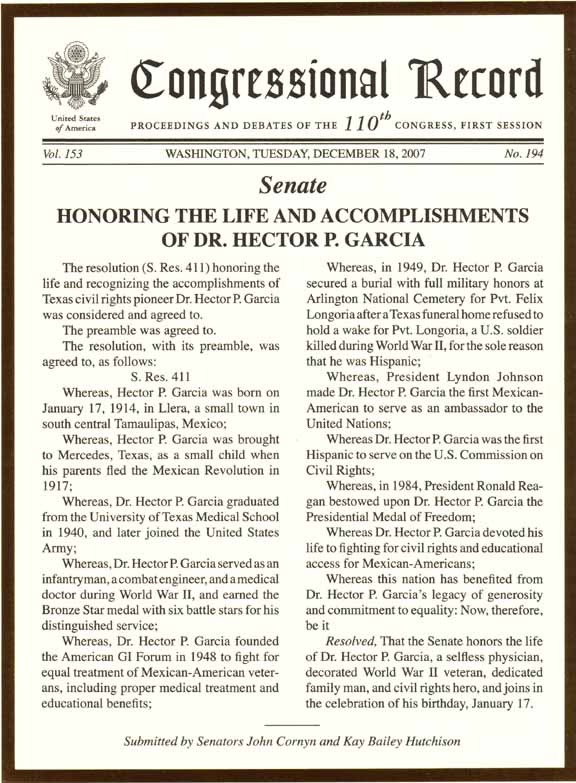
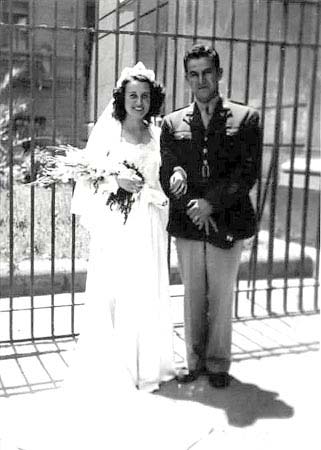 Wanda Fusillo Garcia died Saturday, September 20, 2008 in San Antonio, TX after a brief illness. She was born on November 15, 1919 in Caserta, Italy, the daughter of Aida Botacchi Fusillo and Angelo Fusillo. She grew up in Naples, Italy and studied at the University of Naples,
ultimately receiving a doctorate in classical literature from that institution.
Wanda Fusillo Garcia died Saturday, September 20, 2008 in San Antonio, TX after a brief illness. She was born on November 15, 1919 in Caserta, Italy, the daughter of Aida Botacchi Fusillo and Angelo Fusillo. She grew up in Naples, Italy and studied at the University of Naples,
ultimately receiving a doctorate in classical literature from that institution.
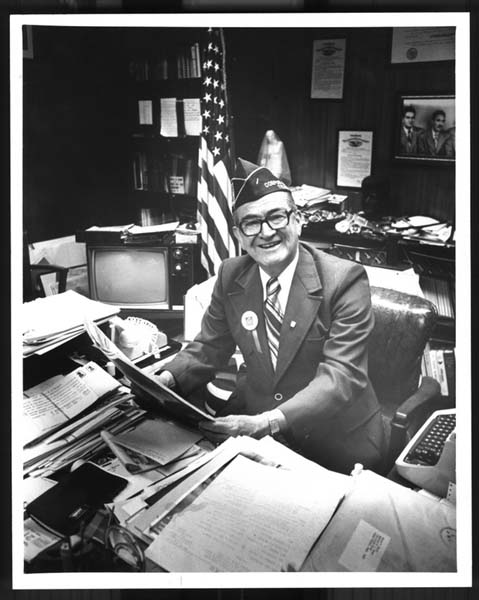
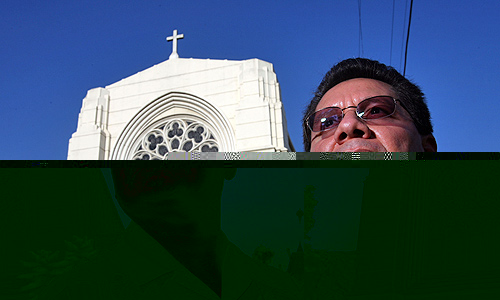
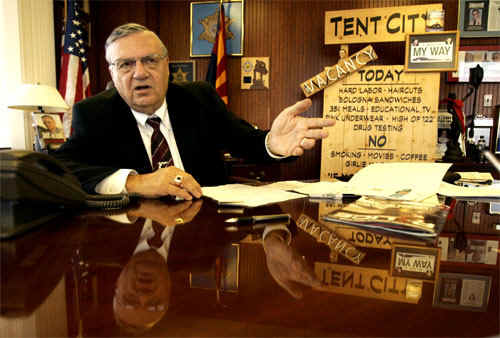
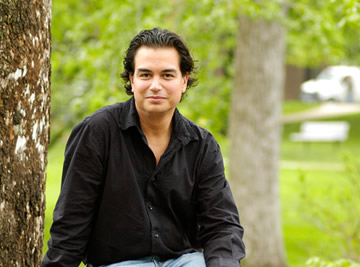 Tomas
Custer: Web Master of HispanicTips
Tomas
Custer: Web Master of HispanicTips
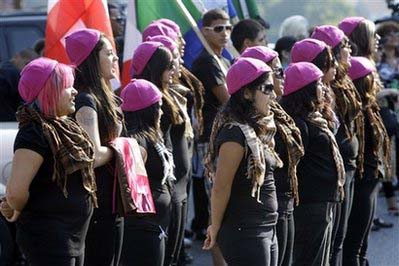
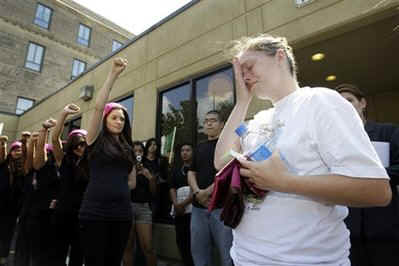
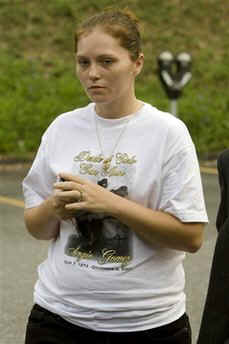 Authorities in Pennsylvania say a fourth teenager
has been charged in the fatal beating of a Mexican immigrant.
Authorities in Pennsylvania say a fourth teenager
has been charged in the fatal beating of a Mexican immigrant.
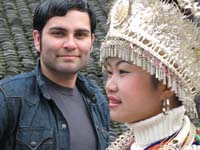





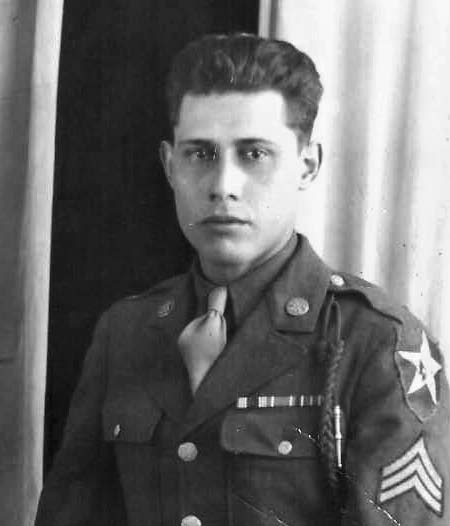 Staff Sgt. Jose Riojas was born November 5, 1920 in Pflugerville, Texas. He was
the oldest child of Casimiro and Sulema Riojas. He attended school in Pflugerville and because of family necessities caused by the depression left school at an early age. He helped the family by picking cotton and doing whatever work was available.
Staff Sgt. Jose Riojas was born November 5, 1920 in Pflugerville, Texas. He was
the oldest child of Casimiro and Sulema Riojas. He attended school in Pflugerville and because of family necessities caused by the depression left school at an early age. He helped the family by picking cotton and doing whatever work was available. 




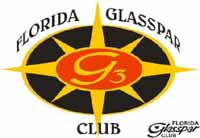
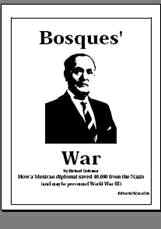

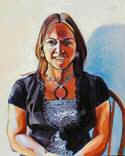 All
sitters were well-informed, in Spanish, of the exhibit's purpose.
They were paid at the rate of professional models and gave their
consent in writing. Their identities will not be revealed, even
though several wanted to share their real names. The exhibit was
held at a non-profit space so that the commission that a
commercial gallery would have charged for any sales can be
donated. It will go to an East Bay organization providing direct
services to undocumented immigrants.
All
sitters were well-informed, in Spanish, of the exhibit's purpose.
They were paid at the rate of professional models and gave their
consent in writing. Their identities will not be revealed, even
though several wanted to share their real names. The exhibit was
held at a non-profit space so that the commission that a
commercial gallery would have charged for any sales can be
donated. It will go to an East Bay organization providing direct
services to undocumented immigrants.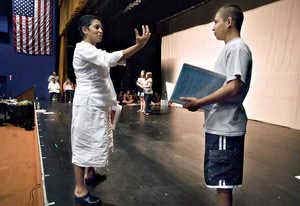
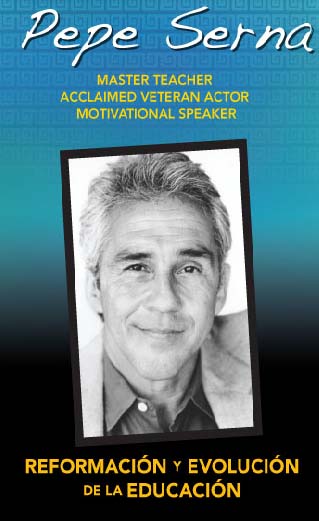
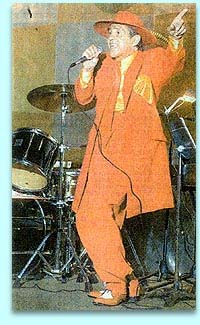 Acclaimed
veteran actor, painter, and Master Teacher
Acclaimed
veteran actor, painter, and Master Teacher 
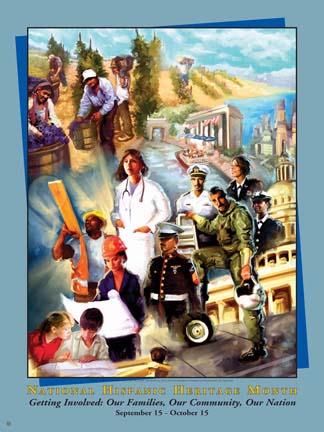


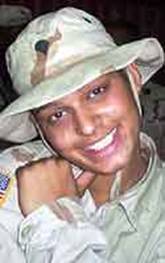
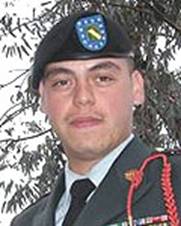
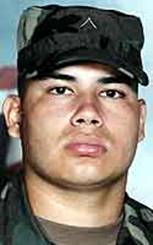
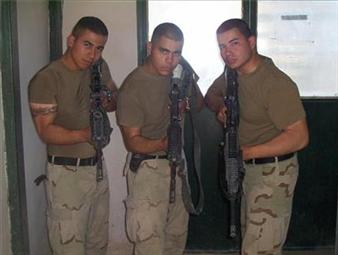
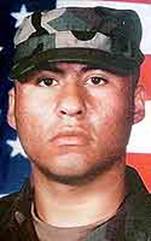
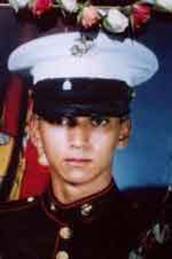
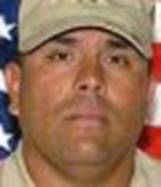
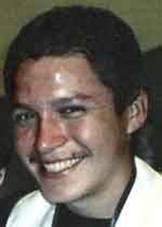
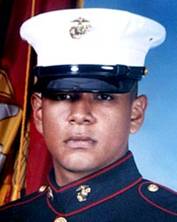
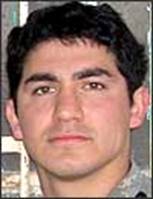
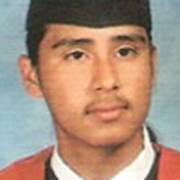
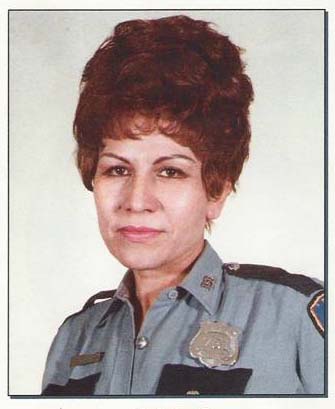

 My
Uncle Oscar and me, November 16, 2005
My
Uncle Oscar and me, November 16, 2005 
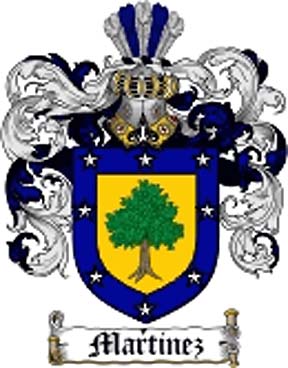
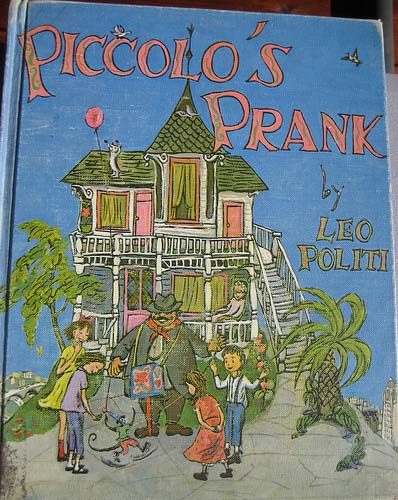

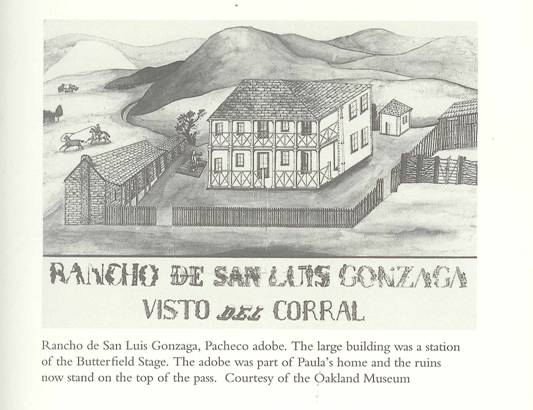

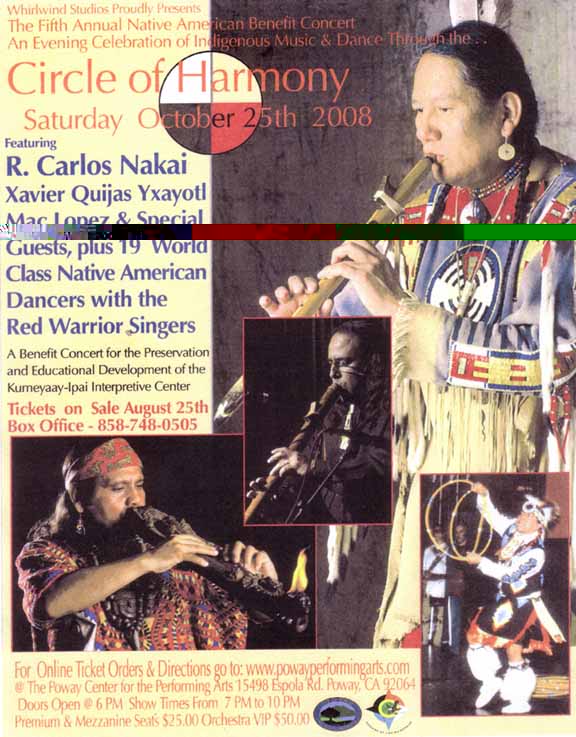
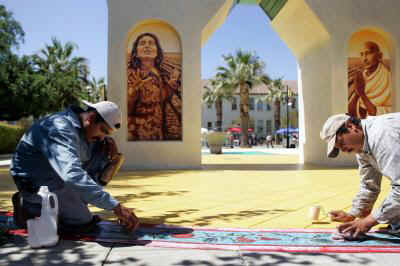
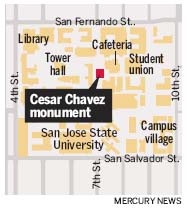 She
didn't hesitate to apply when San Jose State asked for proposals five
years ago. As a college student in the '60s, she met representatives
of Chavez's fledgling United Farm Workers and was so impressed she
signed up to paint murals for the union for $5 a day. She went on to
create one of Los Angeles' first public mural projects and become a
prominent city muralist. Baca now teaches at the University of
California-Los Angeles in the Chicano studies department.
She
didn't hesitate to apply when San Jose State asked for proposals five
years ago. As a college student in the '60s, she met representatives
of Chavez's fledgling United Farm Workers and was so impressed she
signed up to paint murals for the union for $5 a day. She went on to
create one of Los Angeles' first public mural projects and become a
prominent city muralist. Baca now teaches at the University of
California-Los Angeles in the Chicano studies department. 

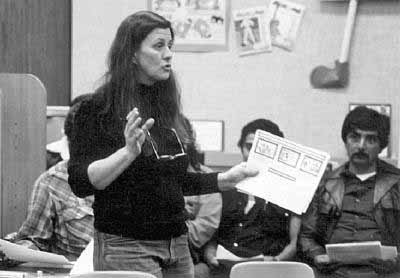
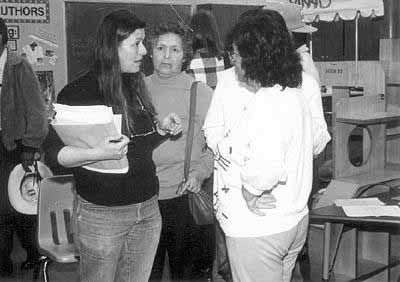
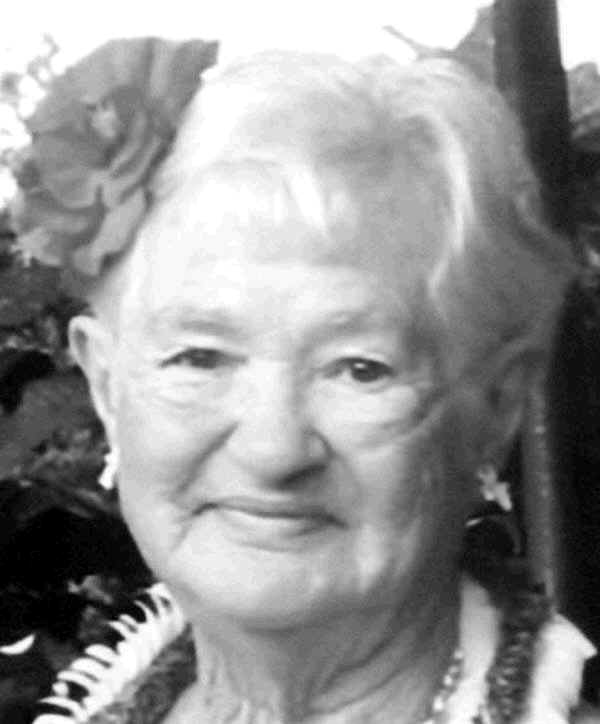
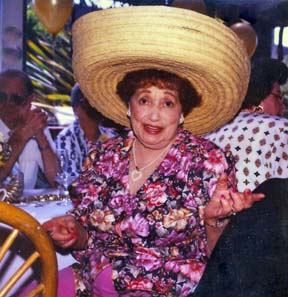

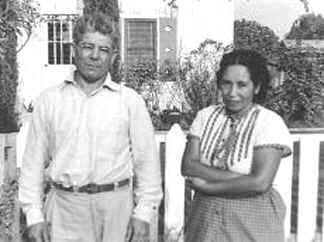
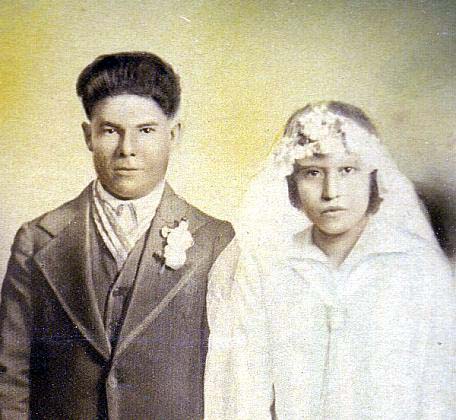 He
met my grandmother Trinidad Torres in Kansas while she was with her
father, Matilde Torres, on a business trip from Mexico. She stayed and
they married in 1928 and had three daughters. They traveled, moving all
over the U.S. My mother the oldest is named Ludvina. Her other sisters
are Luisa and Socorro. My grandparents and their daughters worked the
fields as campesinos. I remember stories about their travels through
Stockton, Valle Imperial, Indio, and other towns. They followed the
picking seasons migrating crisscrossing California to make a living. The
whole family worked in order to make ends meet.
He
met my grandmother Trinidad Torres in Kansas while she was with her
father, Matilde Torres, on a business trip from Mexico. She stayed and
they married in 1928 and had three daughters. They traveled, moving all
over the U.S. My mother the oldest is named Ludvina. Her other sisters
are Luisa and Socorro. My grandparents and their daughters worked the
fields as campesinos. I remember stories about their travels through
Stockton, Valle Imperial, Indio, and other towns. They followed the
picking seasons migrating crisscrossing California to make a living. The
whole family worked in order to make ends meet.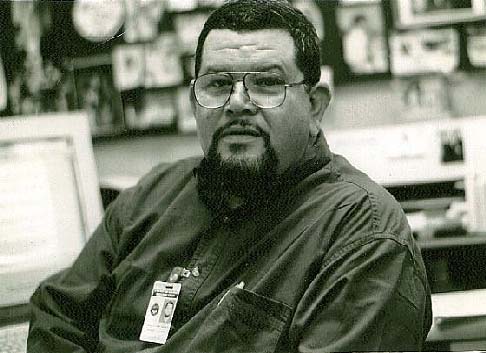 I
live in Westminster and will most likely die here. There are many
stories to be told about my family and the wonderful people and
neighbors of the old barrio. My wife, my daughters and myself continue
to stay active and are a part of our hometown. My grandfather instilled
in me a sense of community spirit that I, my family, and many others
will never forget. I hope I am fulfilling his wishes. He once asked I
stay in touch with my roots and work to help the people he fondly called
Raza. He stated, “We need to demonstrate we are all equal and deserve
to be treated justly.” He didn’t understand why people would get
educated and then move away to spare their children from being raised in
the barrio. He loved the neighborhood.
I
live in Westminster and will most likely die here. There are many
stories to be told about my family and the wonderful people and
neighbors of the old barrio. My wife, my daughters and myself continue
to stay active and are a part of our hometown. My grandfather instilled
in me a sense of community spirit that I, my family, and many others
will never forget. I hope I am fulfilling his wishes. He once asked I
stay in touch with my roots and work to help the people he fondly called
Raza. He stated, “We need to demonstrate we are all equal and deserve
to be treated justly.” He didn’t understand why people would get
educated and then move away to spare their children from being raised in
the barrio. He loved the neighborhood.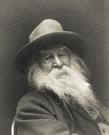
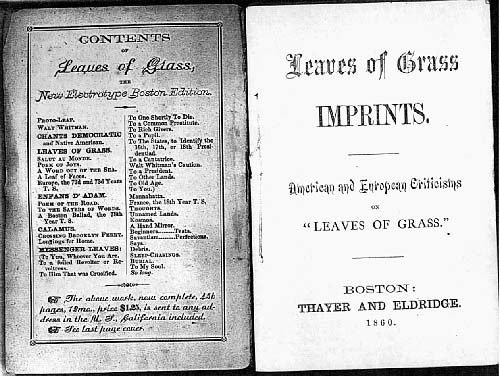

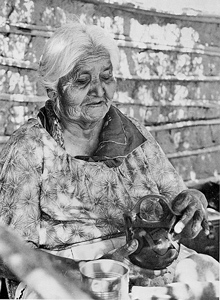 The
Maricopa people were small bands living along the lower Gila and
Colorado rivers. Each of these bands migrated eastward at different
times. The Xalychidom (Maricopa of Lehi), left around 1825-1830. The
last of these bands is said to have left the Colorado River in the
late 1830’s. Eventually these bands came together and became
collectively known as the Maricopa. As they migrated eastward, they
came upon the Pima tribe and established a relationship. Both tribes
provided protection against the Yuman and Apache tribes.
The
Maricopa people were small bands living along the lower Gila and
Colorado rivers. Each of these bands migrated eastward at different
times. The Xalychidom (Maricopa of Lehi), left around 1825-1830. The
last of these bands is said to have left the Colorado River in the
late 1830’s. Eventually these bands came together and became
collectively known as the Maricopa. As they migrated eastward, they
came upon the Pima tribe and established a relationship. Both tribes
provided protection against the Yuman and Apache tribes.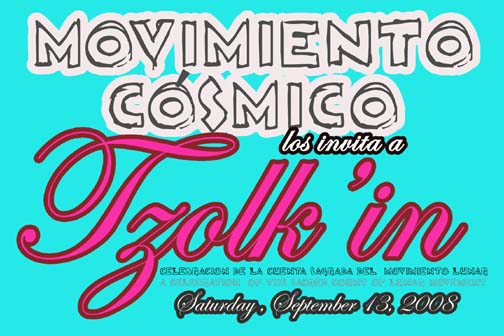
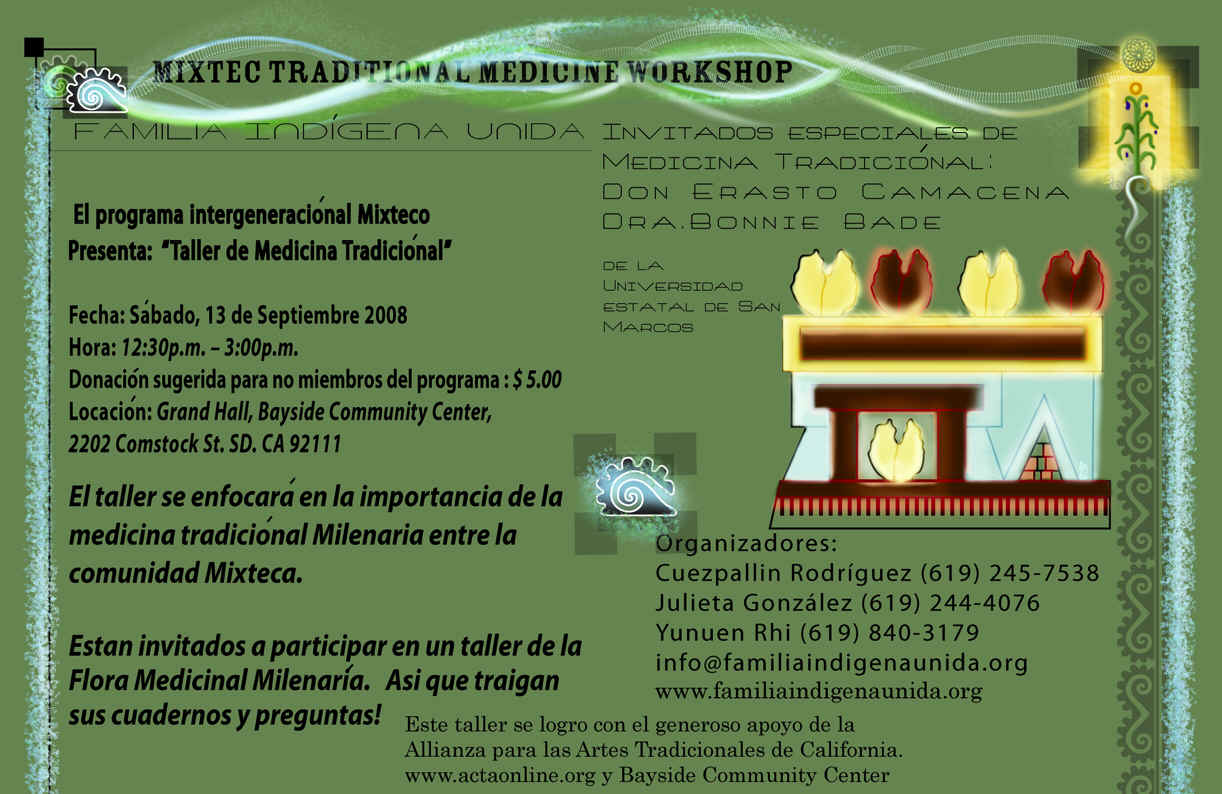
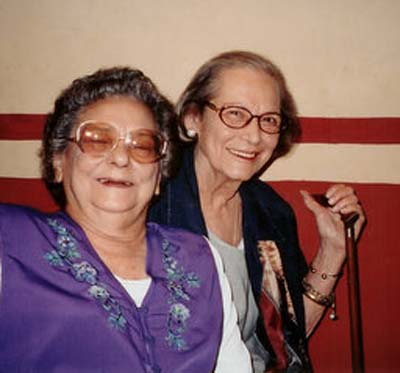 Angel M. Brown, age 79, of the Pleasant Grove Community in Lexington,
Texas passed away Friday, July 18, 2008 at her home after a long and
courageous battle with cancer.
Angel M. Brown, age 79, of the Pleasant Grove Community in Lexington,
Texas passed away Friday, July 18, 2008 at her home after a long and
courageous battle with cancer. 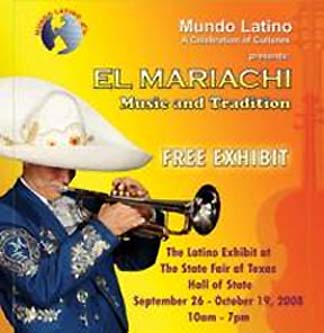

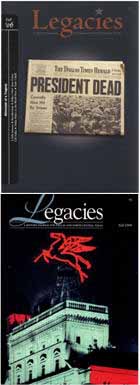
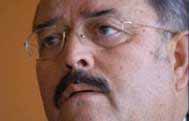 photographic images by José L. Castillo, a Katie award-winning
correspondent for the international EFE News Service. This archive
of photographs, taken between July 2004 and July 2006, was donated
to the UNT Archives in March 2007. It is the first entirely digital
photo collection in the UNT Archives.
photographic images by José L. Castillo, a Katie award-winning
correspondent for the international EFE News Service. This archive
of photographs, taken between July 2004 and July 2006, was donated
to the UNT Archives in March 2007. It is the first entirely digital
photo collection in the UNT Archives. These
splendid, colorful images depict events in the Latino community,
including: the 350,000-strong march against immigration reform in
Dallas in April 2006, Hispanic community and political leaders,
festivals, Latino soccer leagues and other gatherings in the North
Texas area. Featured subjects include: Fort Worth Mayor Mike
Moncrief, former Dallas Mayor Laura Miller, Dallas ISD
Superintendent Michael Hinojosa and former LULAC President Hector
Flores.
These
splendid, colorful images depict events in the Latino community,
including: the 350,000-strong march against immigration reform in
Dallas in April 2006, Hispanic community and political leaders,
festivals, Latino soccer leagues and other gatherings in the North
Texas area. Featured subjects include: Fort Worth Mayor Mike
Moncrief, former Dallas Mayor Laura Miller, Dallas ISD
Superintendent Michael Hinojosa and former LULAC President Hector
Flores.
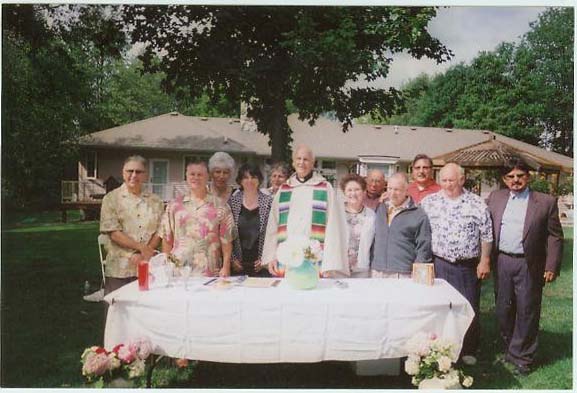

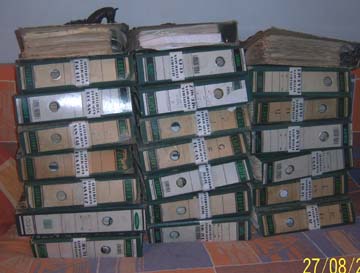
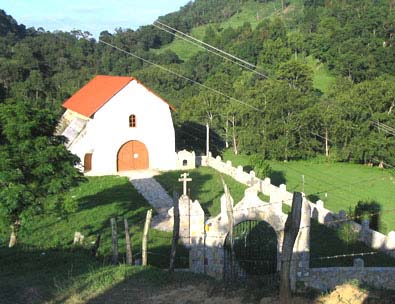
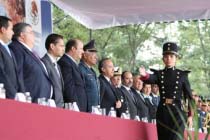 El
presidente Felipe Calderón Hinojosa, acompañado del Secretario de
Defensa; Guillermo Galván Galván, y el Secretario de Marina; Mariano
Francisco Saynez Mendoza, durante la entrega de espadines a cadetes
del Heroico Colegio Militar, en el marco de la ceremonia conmemorativa
al CLXI aniversario de la gesta heroica de los Niños Héroes de
Chapultepec. Notimex
El
presidente Felipe Calderón Hinojosa, acompañado del Secretario de
Defensa; Guillermo Galván Galván, y el Secretario de Marina; Mariano
Francisco Saynez Mendoza, durante la entrega de espadines a cadetes
del Heroico Colegio Militar, en el marco de la ceremonia conmemorativa
al CLXI aniversario de la gesta heroica de los Niños Héroes de
Chapultepec. Notimex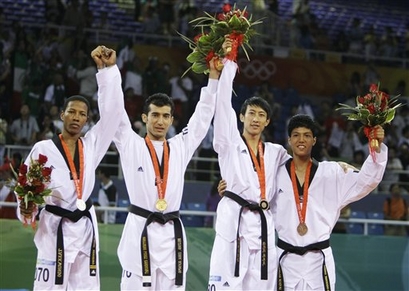
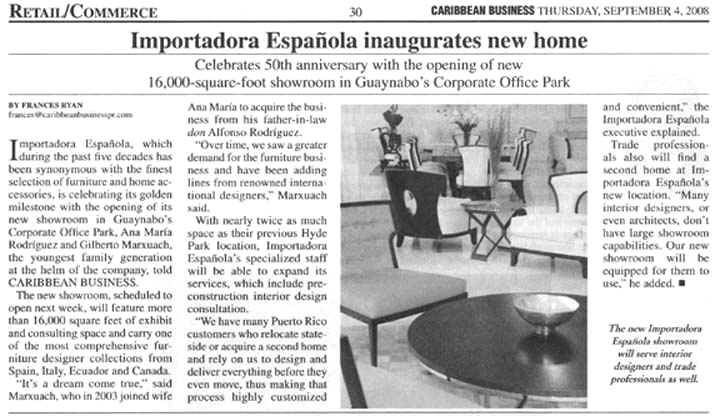
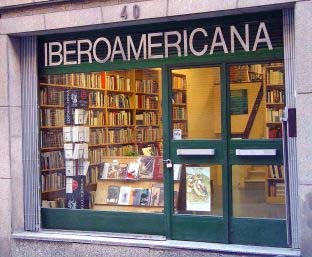

 Mexicolore
('Mexico - the Lore of the Land') was set up in 1980 by Graciela Sánchez,
for many years a professional dancer with the world famous Ballet
Folklórico de México company, and Ian Mursell, an audio-visual
consultant and development education specialist...
Mexicolore
('Mexico - the Lore of the Land') was set up in 1980 by Graciela Sánchez,
for many years a professional dancer with the world famous Ballet
Folklórico de México company, and Ian Mursell, an audio-visual
consultant and development education specialist...